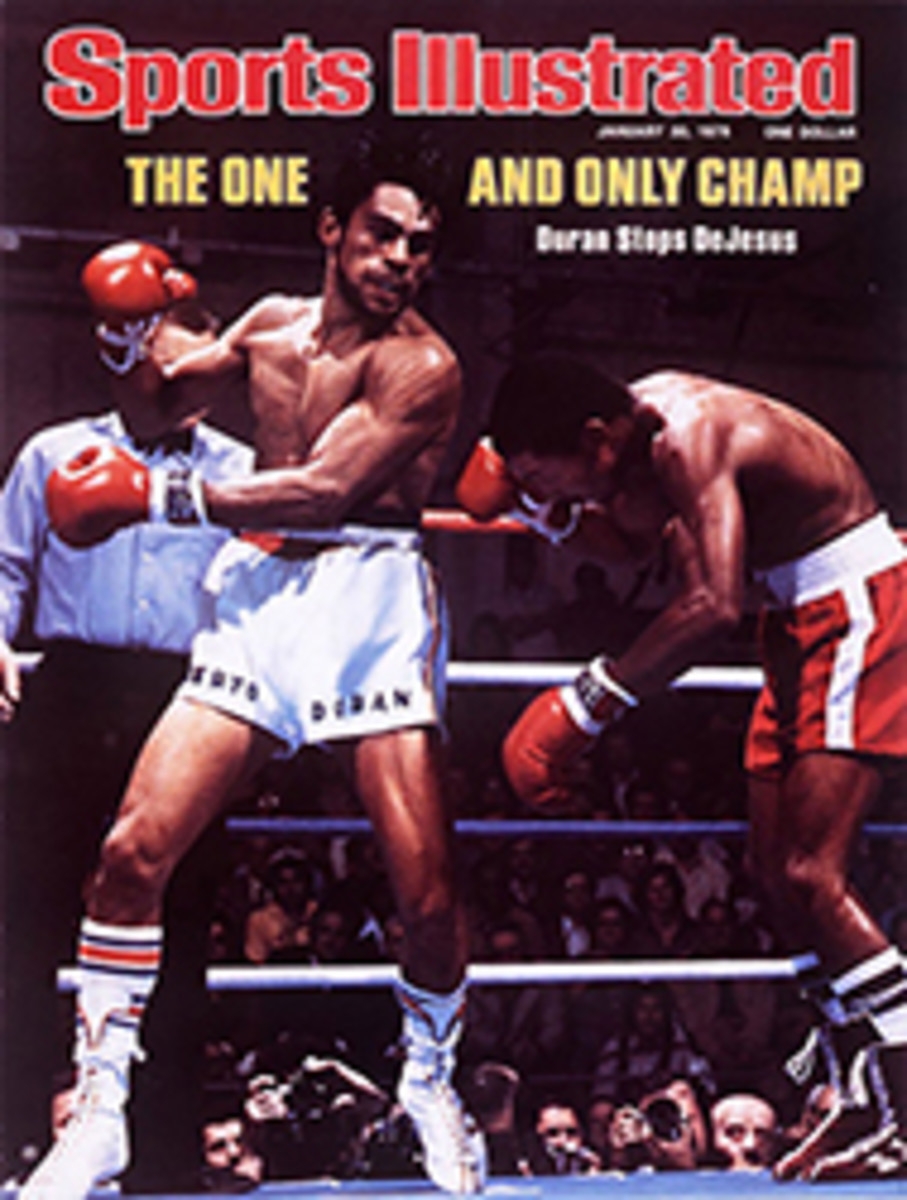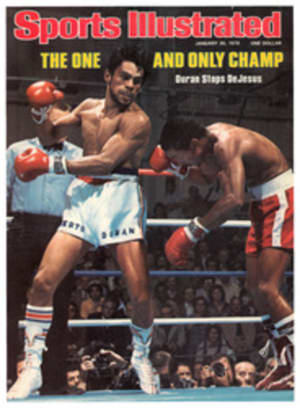
VISITORS RUN OFF WITH THE SHOW
The track and runways for the Sunkist Invitational at the Los Angeles Sports Arena are painted bright orange and lemon yellow, a not-so-subtle reminder of just what business the meet's sponsor is in. They also provided a cheerful setting last Saturday night for a host of Africans and Europeans who zipped around the 160-yard oval. However, the infield might as well have been painted black for Canadian high jumper Greg Joy, the world-indoor-record holder, who viewed his every trip to the crossbar as a perilous journey.
If Joy did not reign supreme (he was beaten by Dwight Stones), other foreigners did. Kenyans, led by Mike Boit, finished one-two-three in the 880. Suleiman Nyambui, a Tanzanian who teaches Swahili, beat out a Kenyan and Britisher to win the two-mile in 8:18.0. And West Germany's Dr. Thomas Wessinghage defeated Nyambui's countryman Filbert Bayi to win the mile.
Wessinghage (pronounced Vessingha-gay) was a busy man last year, becoming a father for the first time, finishing medical school at the University of Mainz and winning enough races to be ranked second best in the world in the 1,500 for the second year in a row. In so doing he beat New Zealand's John Walker in three out of four meetings and finished second to Steve Ovett of Great Britain in the World Cup.
"Anyone can usually find a few hours a day for themselves," said Wessinghage. "I'd run for 45 minutes in the morning and then have a more serious workout at four or five in the afternoon. It was a nice break after sitting at a desk all day.
"I knew how to combine medical school and running. It was not too hard for me." Nothing to it really. Fourteen different examinations every one or two weeks from March to July, but who needs sleep?
Wessinghage's seven-month-old son Daniel and his wife Ellen Tittel Wellmann Wessinghage, who was seventh in the 1,500 at Montreal and is now a law student at Mainz, traveled to Los Angeles with Herr Doktor. Sunkist promoter Al Franken provided them with a stroller, and Ellen paid him back by finishing second to Francie Larrieu in the women's mile. Not too bad a showing, considering it was her first race in a year and a half. "She was wonderful," said her proud husband. "She has been back in training for only four and a half months. I was so surprised to see her in that great shape."
Wessinghage and Bayi had never raced before. They were scheduled to battle in Stockholm last summer, but Bayi became sick. Then, he got married in September and stopped serious training for a while. It showed in his first two appearances in America this season. The world-record holder in the 1,500 lost both times, but it was believed he was rounding into shape.
Promoter Franken had John Kroningh of the University of California at Irvine serve as a rabbit for the first 600 yards, then Bayi and Wessinghage took over, in that order. Wessinghage challenged once, was held off, then surged ahead for good just before the 11th and last lap. His 3:59.7 was his first sub-four-minute mile indoors.
Wessinghage liked the bouncy track and its high-banked turns and was even more pleased with his performance.
"I expected to win," he said. "You get a feeling in a race if a runner you're running behind is strong. He held me off, but I knew that I was going to have another chance. Sometimes you can be in control of a race even if you're in second place."
All in all, not a bad night for West Germany, what with the Wessinghages' first and second places and pole vaulter Günther Lohre beating world-record holder Mike Tully of UCLA on fewer misses at 17'8½".
Wessinghage is a fresh face at U.S. indoor meets, but Nyambui is not exactly a stranger—he has won the AAU indoor three-mile the past two years. Still, he is not a drawing card. It is doubtful he would have been invited to America this winter if he weren't riding Bayi's coattails.
Nyambui, a member of the Western. Tanzania Jita tribe, had an advantage over Britain's Nick Rose, a Western Kentucky alumnus. Nyambui had been working out in California with Bayi for three weeks, getting into shape. Rose had been scheduled to compete in Philadelphia the night before, but the snowstorm discouraged him, and he flew directly from Nashville to California instead—if "directly" can be used to describe a trip that took 16 hours.
Rose, who had won the AAU crosscountry title in Houston in November and had beaten Nyambui in the 3,000 at the Muhammad Ali Indoor Games two weeks before the Sunkist, was sporting a pair of red socks—if Sunkist had decorated the joint in what it considered an appropriate color scheme, certainly an athlete named Rose was entitled to follow suit.
After the first quarter mile, Rose felt the pace was too slow and moved out in front, his long hair streaming behind him. Nyambui settled into second, followed by Henry Rono of Kenya and Washington State, the NCAA cross-country champion.
After 15 laps, Rono took the lead, with Nyambui close enough to his right shoulder to bite it. Three laps later, with four to go, Nyambui let loose—and so did the crowd of 12,243 when Rono and Rose fought to stay close. Nyambui led for the last 500 yards, but he had to stave off Rono every foot of the way, with Rose finishing third.
Nyambui's 8:18.0 was the second-fastest indoor two-mile ever run (Emiel Puttemans' 8:13.2 record was set on a 180-meter track) and the best ever on an 11-laps-to-a-mile track. The Tanzanian had managed it despite taking a last-lap detour and slipping a bit on the infield's concrete surface as he lapped a slower runner. When the three top finishers jogged around the oval, cooling down, the crowd gave them a standing ovation.
"I didn't think we could run that fast," said Rono. "After the first quarter. Rose set a very fast mid-race pace."
"The first quarter was 65.3 seconds, and that set us behind the pace that you need for a world record," said Rose. "Maybe we can do it next week at the Millrose Games in New York. Maybe in San Diego. We can get down to the world record with the three of us in the same race. Nyambui has the speed; I've seen him run a four-minute mile indoors. Rono is like I am; he does not have the kick at the end."
The Sunkist Invitational had begun in a manner to gladden any promoter's heart. Evelyn Ashford, a junior at UCLA, had set an American record in the women's 60-yard dash, the first final of the night. Her time of 6.80 bettered DeAndre Carney's mark of 6.85, set only a week earlier. But sprint and hurdle records are an endangered species this year (Houston McTear had broken the men's world 60-meter record at the Muhammad Ali Games, and Deby LaPlante set a women's world record in the 60-yard hurdles in the CYO meet at College Park, Md. a week later) because of a switchover to automatic timing for all events up to and including the quarter mile. Ashford's mark, for example, is .3 slower than Wyomia Tyus' hand-timed world record, set in 1966.
Oh, there were a few problems at the Sunkist. The members of the Muhammad Ali Track Club had withdrawn, depriving the Sunkist of McTear, four other sprinters and UCLA hurdlers Greg Foster and James Owens. The refugees from the Philadelphia Track Classic were exhausted. Because the long-jump/triple-jump runway was painted lemon yellow, the white take-off stripe could barely be seen.
But generally, track and field athletes are stoics, so little griping was heard. The exception to this rule of late has been the high jumpers, and this night there was to be no exception. Theirs was the last event to finish, and it featured Stones, founder and still sole member of the Desert Oasis Track Club, vs. Joy, who leaped 7'7" in College Park, Md. two weeks ago to break Stones' indoor world record of 7'6½". Joy's feat hardly made Stones happy; it stripped him of his last world record. The U.S.S.R.'s Vladimir Yashchenko surpassed Stones' outdoor mark in July.
At the Sunkist, five of the six high jumpers approached the bar from the right, and plenty of room was afforded them. Joy was the only one to approach from the left, and he was crowded, runners often whizzing by his left ear. He complained that as he was approaching the bar on one try, the P.A. system boomed out some tidbit that could have been held up a moment longer.
Stones won with a leap of 7'5", then didn't come close in three attempts at a world-record 7'7¼".
"Can you believe it?" said Joy afterward. "I thought one of those times that the P.A. announcer was going to order a Big Mac in the middle of my approach."
Stones did not sympathize with him, perhaps because he could remember the meets when he had had to make his approach across the long-jump runway, or perhaps because he had a sore throat and a cough and had had only five hours sleep out of the previous 50 because of the Philadelphia storm.
"He's not far and away the best high jumper indoors," said Stones of Joy. "One jump does not create a world-record holder. He has beaten me only two times out of about 30, and both times were in Canada. But the guy's no slouch: he's no fluke. Winning in my home town against a world-record holder is almost as satisfying as being totally well and totally rested."
And how did the Desert Oasis T.C. feel about no longer owning any world records?
"It's one of those things," Stones said. "I'm still responsible for them because if it wasn't for me, the high jump wouldn't be as popular. I'm not quitting. Here I am, sick as a dog, and I'm trying for world records."
With the 1978 indoor season just three weeks old, eight world marks already have been set. Quite obviously Stones is not alone in his quest.
PHOTO
Suleiman Nyambui came off a slow pace in the two-mile in the second-fastest indoor time ever.
PHOTO
Wessinghage ran his first sub-four-minute indoor mile after calmly trailing Bayi until the final lap.

